One of the most popular hikes in the state, hiking Hanging Lake in Colorado should be on every hiker’s bucket list. After a year being closed due to fire damage, here’s everything you need to know to get back out to this spectacular lake.
Table of Contents
- What is Hanging Lake?
- Preparing for Hiking Hanging Lake in Colorado
- New Timed Entry System
- Safety Measures in Glenwood Canyon
What is Hanging Lake?
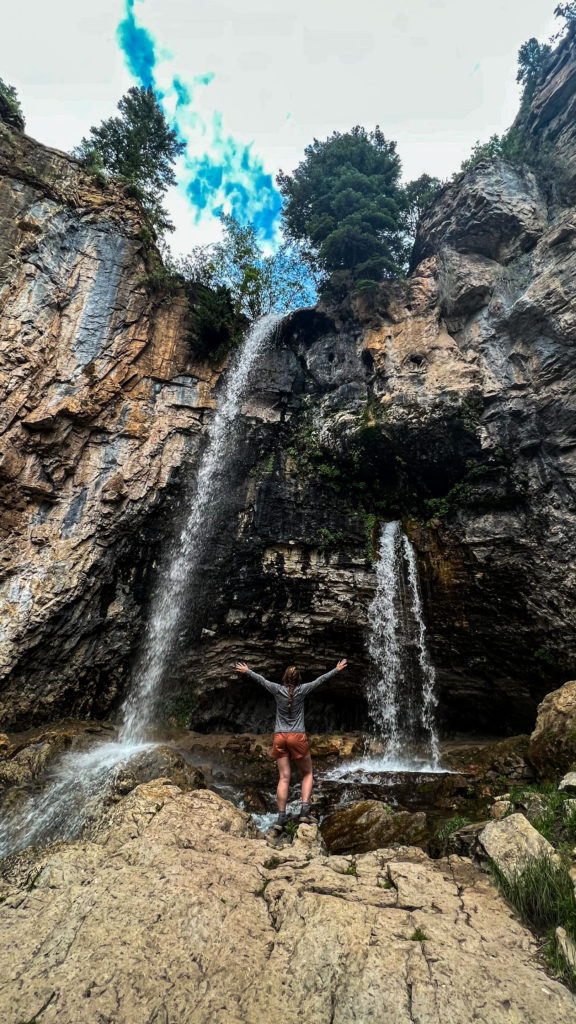
Named a National Natural Landmark in Colorado, Hanging Lake is a popular site for hikers and nature lovers to visit.
A geologic fault caused the lake bed to drop away from the floor of the valley above, and this clear turquoise lake now sits suspended in Glenwood Canyon, just outside of Glenwood Springs.
Bridal Veil Falls flows into Hanging Lake, depositing carbonates that have built up the edge of the lake and give it its brilliant color.
After making the trek 1.2 miles and 1,000 feet up into Glenwood Canyon to Hanging Lake, a boardwalk will take you around to see the lake from all angles. At the start of the boardwalk you’ll see a sign directing you 200 feet further up to Spouting Rock.
Spouting Rock is a spectacular waterfall that gushes out from a rock in the canyon above Hanging Lake and feeds into Bridal Veil Falls. You can walk behind this waterfall and see it from the other side as well.
As an avid hiker and a mountain-lover, I thought this trail was amazing! It might seem like a touristy hike to do, but I highly recommend that everyone experience it at least once! There’s no guarantee that incredible places like this will be around forever, so it is important to visit them now before it’s too late.
Hanging Lake Trail Stats
These stats are via Alltrails. The link to this trail listing can be found here.
- Distance: 3.1 miles
- Elevation Gain: 1,187 feet
- Route Type: Out and Back
- Rating: Moderate
- Estimated Time: 2 hours 9 minutes (I would say it is closer to 3+ hours, with 2 hours up and about 1 hour down)
Preparing for Hiking Hanging Lake in Colorado
When I was initially planning a trip to Colorado, I had no idea that Hanging Lake was even a possibility. The trail has been closed for over a year due to fire damage from the Grizzly Creek Fire.
I was so excited when I saw a post about it reopening on June 25, 2022, just in time for my trip the first week of July.
But being excited for this hike and actually hiking Hanging Lake in Colorado are two very different things.
The hike up to Hanging Lake is no easy feat. It boasts 1,200 feet in vertical elevation gain in just 1.2 miles. Hanging Lake Trail consists primarily of crude rock stairs and seven bridges that intersect with Deadhorse Creek as the trail goes up Deadhorse Canyon into the greater Glenwood Canyon.
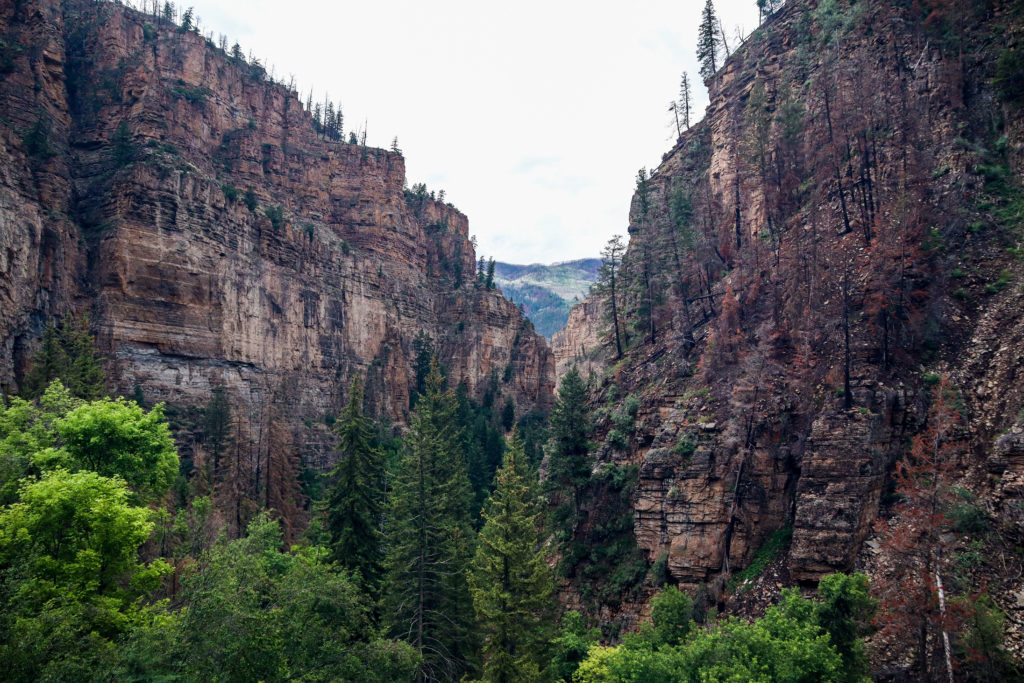
The switchbacks get monotonous, but it’s important to take all of them and stay on the trail to protect the fragile ecosystem in this area and prevent further erosion.
Some quality time with an elliptical or stair-stepper machine is the best way to prepare yourself for this steep trail. You’ll need a lot of glute and calf strength for the hike up and quadriceps strength to protect your knees on the way down.
My friends and I came from sea-level before heading out to Colorado, so it was important we do some hiking at a higher elevation and acclimate before hiking to Hanging Lake. The lake sits at 7,323 feet in elevation, so while it’s not at super high elevation, the incline and lack of oxygen in comparison to the Midwest definitely caused difficulty breathing.
You will also want to be well-prepared with gear on the trail. Use sunscreen and protect yourself from sun exposure. You will also want breathable clothing and quality hiking shoes.
Gear List for Hanging Lake in Colorado
- Breathable hiking attire (find a few of my favorites on my Amazon storefront here*)
- Trail Runners or Hiking Boots (my favorite pair by Columbia is linked here)
- Day Pack
- Water Reservoir or Water Bottles (at least 1/2 liter per hour on trail, more if you can)
- Trail Snacks
- 10 Hiking Essentials (linked here)
- Camera or Phone (use Airplane mode to preserve your battery!)
*this signifies any links that are affiliate links. This means that I earn commission if you choose to buy something from these links. This comes at no additional cost to you and enables me to keep putting out content for you. If you choose not to purchase through these links, that’s fine too!
New Timed Entry System
In order to keep everyone safe and protect the fragile ecosystem at Hanging Lake, a timed entry system is in place.
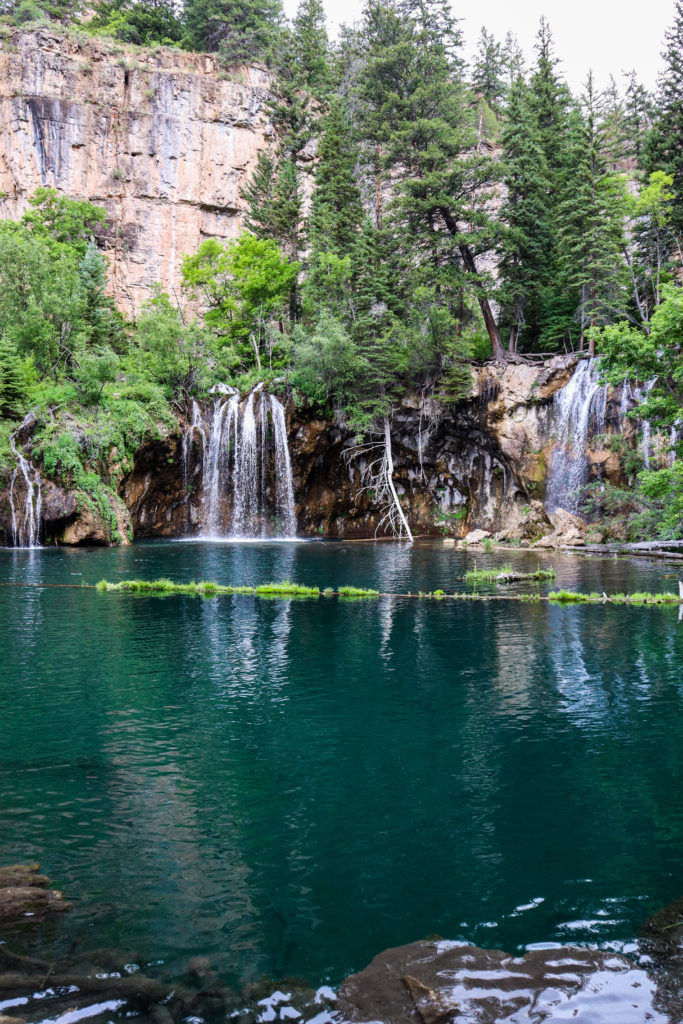
Advanced reservations to visit Hanging Lake are required from June 25-October 31st. Permits are available hourly from 6:30 am to 5:30 pm. This is intended to allow a three-hour time slot for you to complete the hike. No one is allowed to enter the area after 5:45 pm, so there is no way around this reservation system.
When we checked in upon arriving at Hanging Lake, they checked our name against the reservation. Everyone in the party was required to have a $12 permit. This allowed entry for everyone and for our vehicle to park at the Hanging Lake Rest Area.
Parking was limited when we arrived at 7:30 am, and all available spots were taken when we got back to our vehicle. Also be aware that no vehicles over 25 feet in length are permitted.
You must also arrive within 15 minutes before or after your reservation time.
I would advise snagging an early reservation time to ensure a parking spot, beat the crowds, and get up to the lake before the heat of the day.
Bathrooms are available on site, but rangers do ask that you not spend more time there than necessary to allow others to park upon arrival.
You can find all of the information to purchase your permit to visit here. Cancellations before 48 hours of your visit are allowed and they will refund your electronic payment (I can attest to this myself).
Safety Measures in Glenwood Canyon
Rock and Mudslide Threat to Glenwood Canyon
In 2020, the Grizzly Creek Forest Fire caused damage to Glenwood Canyon and the area surrounding Hanging Lake. The subsequent mudslides throughout the area caused the entire trail system to be swept away. Nearly all of the 7 bridges along the trail had to be rebuilt by rangers before Hanging Lake could reopen.
While no permanent damage was sustained to Hanging Lake itself, Glenwood Canyon has been left unstable. Heavy rains could mean further rock and mudslides in the canyon. CDOT and local rangers closely monitor the situation in the canyon, but it is important to be aware of the danger.
During the summer monsoon season, any heavy rains or forecasted bad weather may result in I-70 being temporarily closed and re-routed. Hanging Lake will also be closed and any reservations will be refunded.
This actually happened in the afternoon on the day we visited, and a friend that was headed from Denver to meet up with us was re-routed due to closures on I-70. The high chance of afternoon rain in the mountains is another great reason to make early reservations and plan to be out of Glenwood Canyon before the afternoon.
Due to a fear of a road closure or emergency evacuation to the trail, you must have your own vehicle parked at the trailhead while you are hiking. No UBER, taxi service, or rides from friends or family are permitted for your own safety.
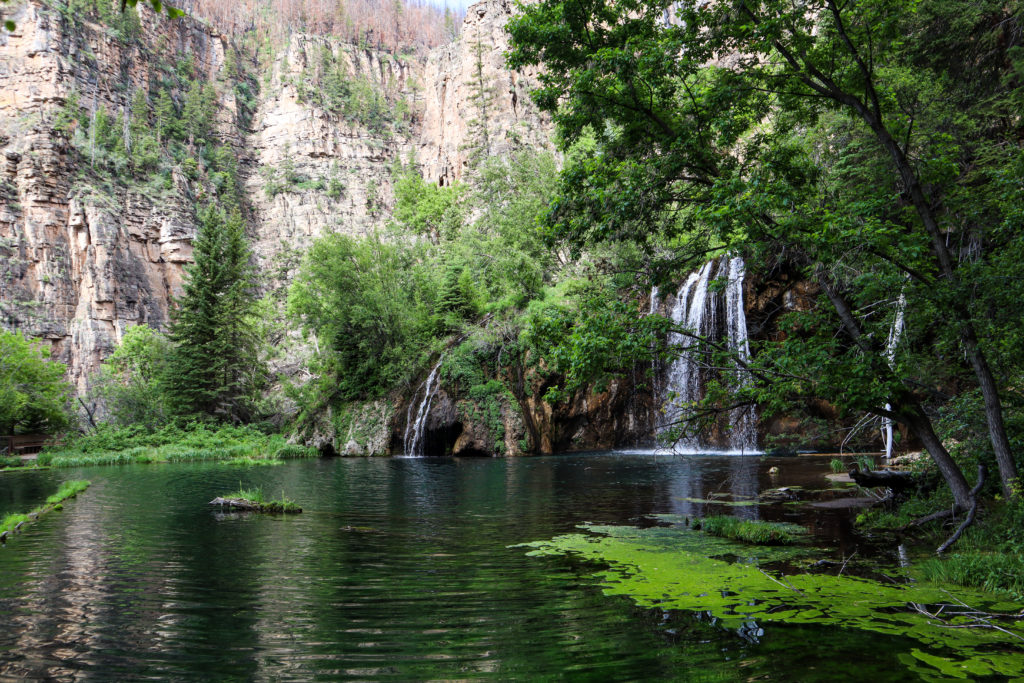
Leave No Trace Practices at Hanging Lake
As well as standard 7 Leave No Trace Principles (find these linked here), there are other practices highlighted by rangers in order to protect Hanging Lake in Colorado.
These enforced rules are the following:
- No swimming or dipping of body parts in the lake
- No standing under or on top of the waterfalls
- No walking on the fallen log in the lake
- No fishing
- No pets allowed on the trail or in the lake, except service animals
Other important things to remember are to pack out any trash or other personal items. You should leave only footprints and take only photographs. And make sure that your footprints are on designated trail surfaces to protect the canyon from erosion!
Liked this post? Pin it for later!
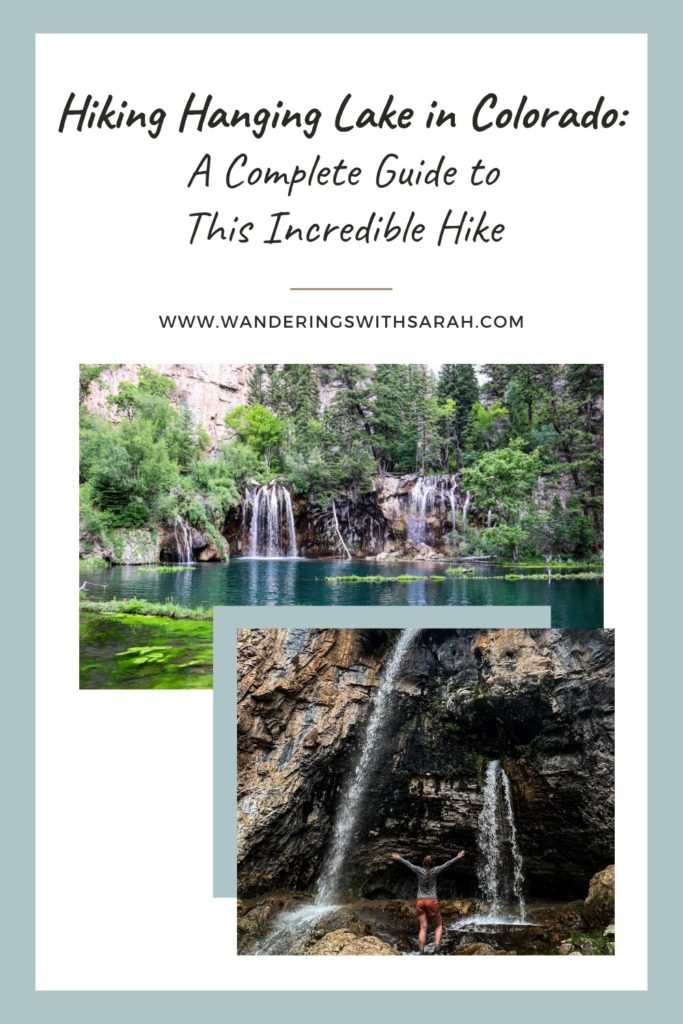
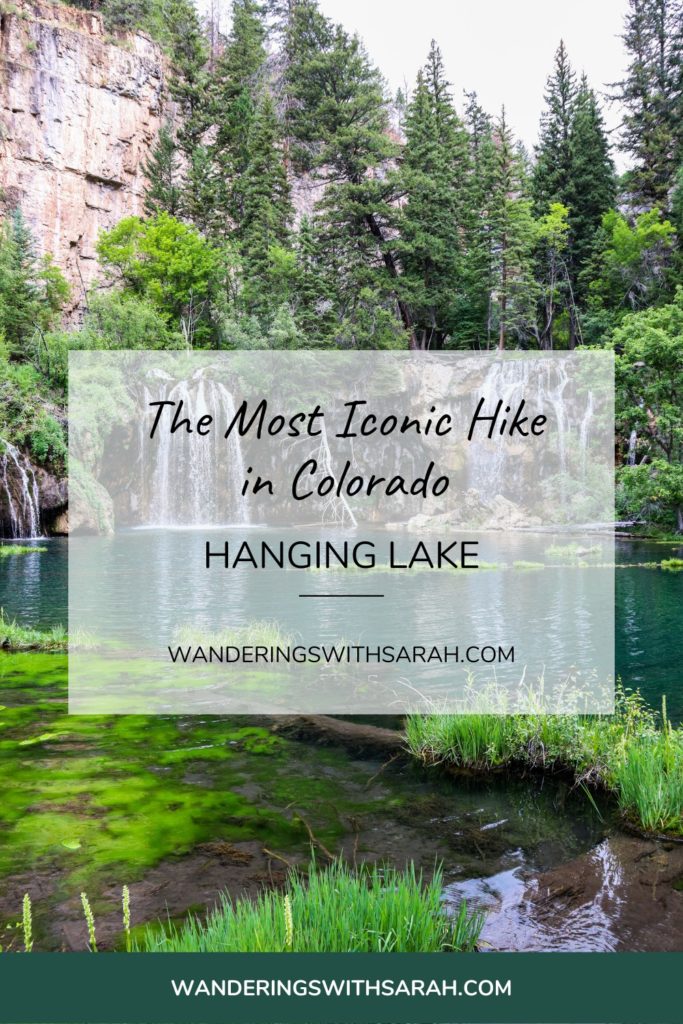
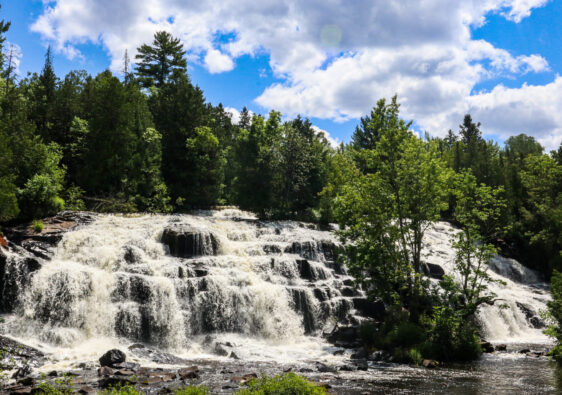
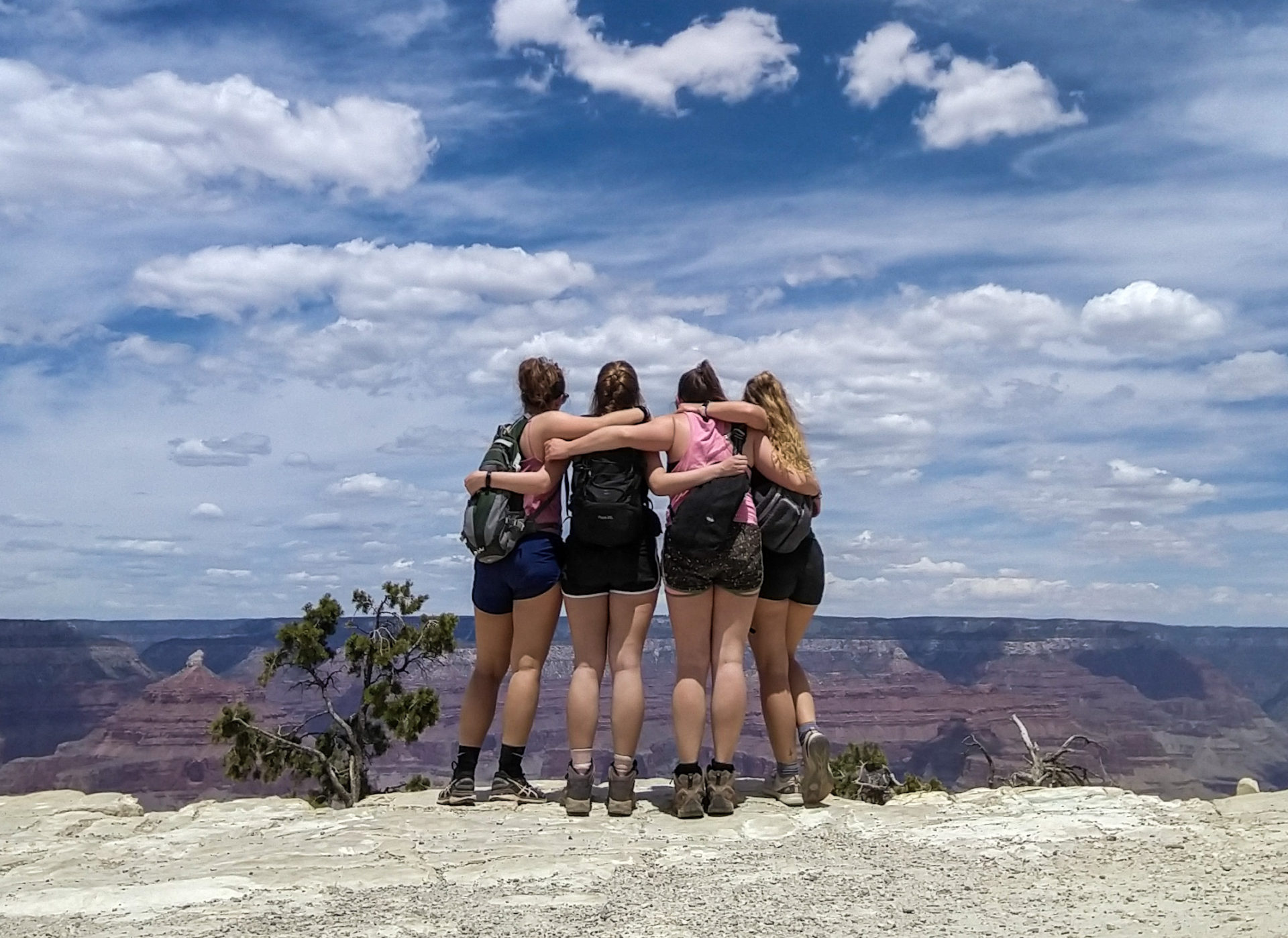
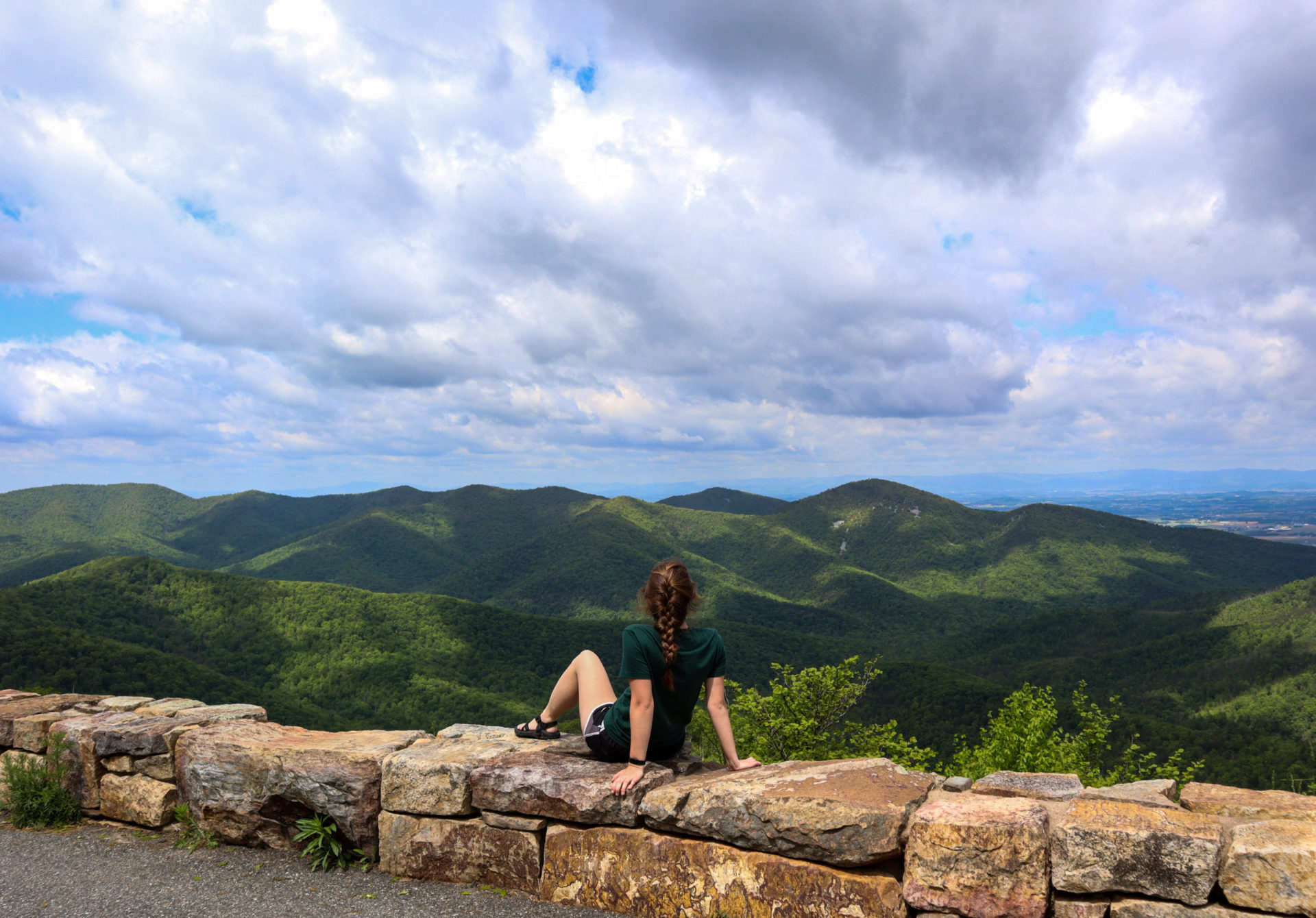
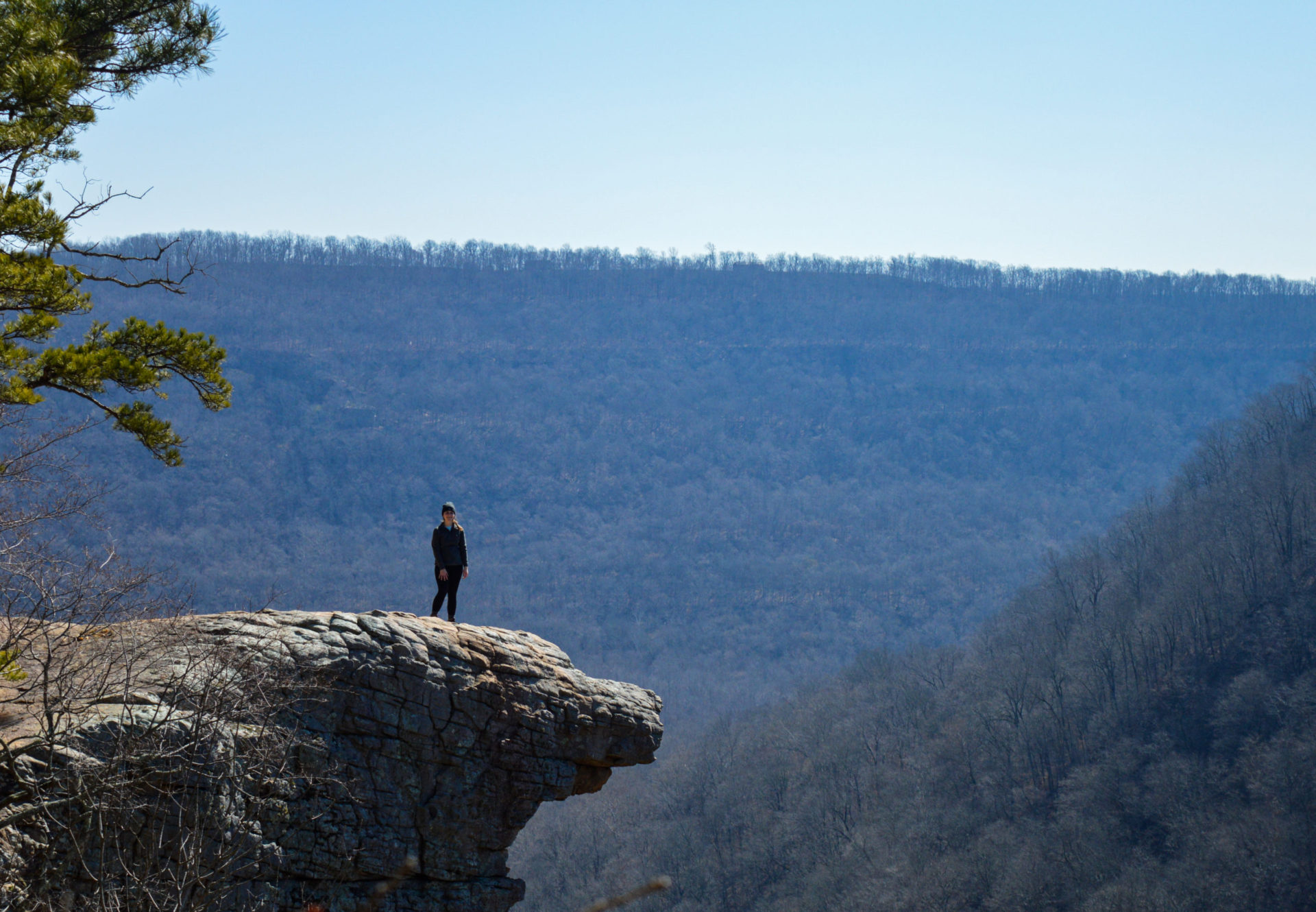
[…] Hiking Hanging Lake in Colorado: A Complete Guide to This Incredible Hike […]